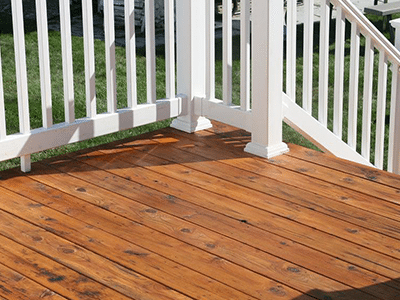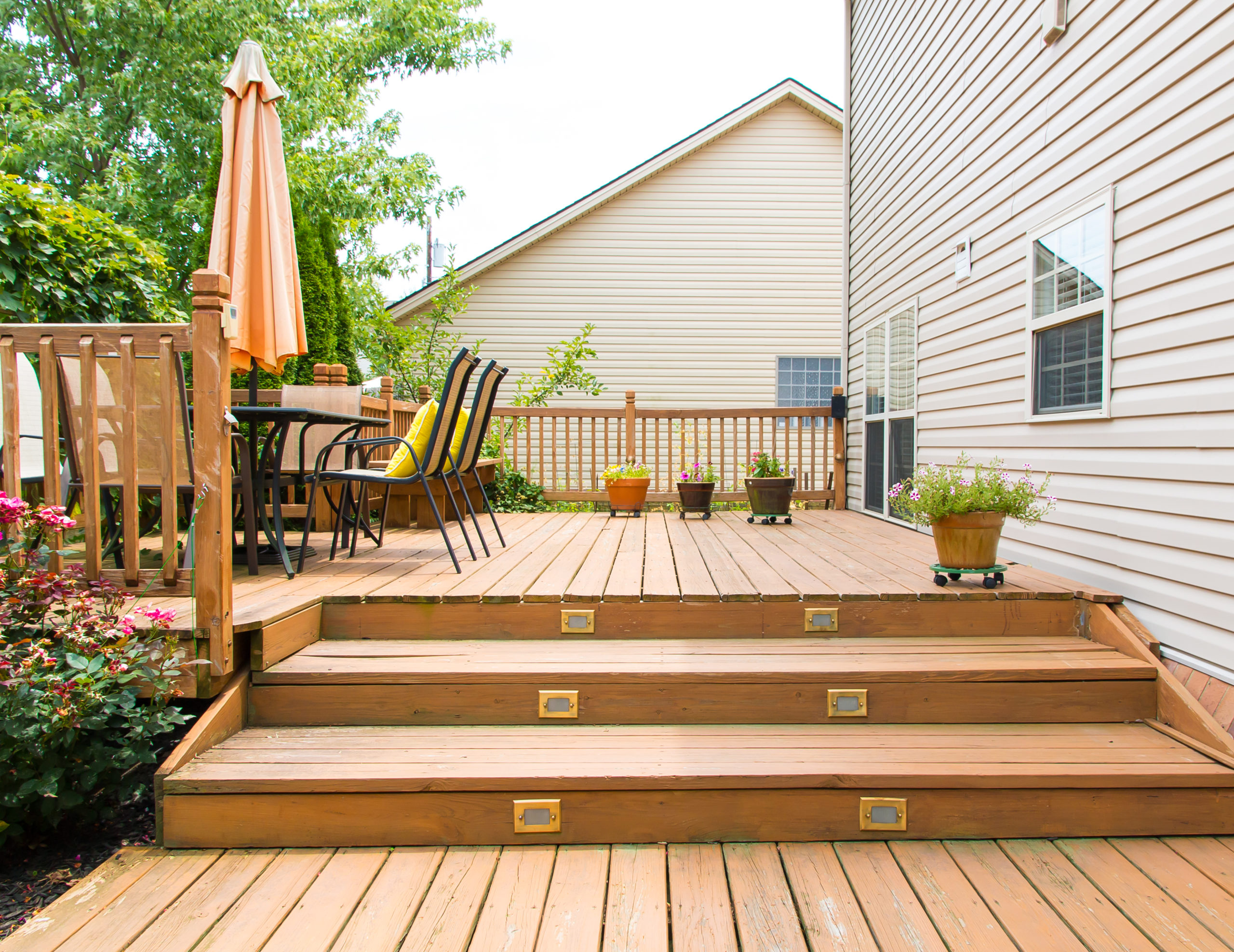Beautiful Deck Improvements: Utilizing the Perfect Stain
Wiki Article
A Comprehensive Guide to Different Kinds Of Deck Staining Techniques for Ultimate Protection and Visual Appeals
In the realm of deck maintenance, the art of tarnishing stands as an essential step towards both maintaining the stability of your exterior area and enhancing its aesthetic allure. As we browse with the detailed globe of deck discoloration methods, one starts to appreciate the nuanced strategies that can make all the difference between a mediocre finish and a remarkable one.Comprehending Different Types of Spots
Various types of stains are typically made use of in the process of deck discoloration to attain different visual and protective results. Transparent discolorations are optimal for showcasing the all-natural grain of the wood while giving very little protection against UV rays and dampness. On the other hand, semi-transparent spots offer a balance between shade enhancement and security, permitting some wood grain to show via. For a more nontransparent surface that gives maximum security versus the elements, solid spots are the recommended selection. These stains can be found in a variety of shades and effectively conceal the wood grain.Moreover, there are additionally specialized discolorations such as toners and sealants. Toners include a tip of shade to the timber while providing minimal defense, making them ideal for more recent decks with less wear. Sealers, on the various other hand, deal security versus dampness and UV rays without adding color, making them a preferred option for decks that currently boast a desirable tone. Understanding the qualities and benefits of each sort of stain is important for accomplishing the preferred look and toughness for your deck.
Selecting the Right Stain Color
When thinking about the appearances of your deck staining project, the selection of discolor color plays an essential role in enhancing the protective top qualities of the picked discolor kind (Right Deck Stain). The shade you select can considerably impact the total look of your deck, as well as its capacity to endure the components graduallyWhen selecting a stain color, it's vital to consider the existing color design of your home's outside. Balancing the deck tarnish with the overall aesthetic of your residential or commercial property can produce a cohesive and aesthetically appealing outside room. Furthermore, the shade of your deck discolor can affect the temperature of the deck surface; darker shades tend to take in even more warm, while lighter shades reflect sunshine and stay cooler.
In addition, the sort of timber you are staining will also impact just how the discolor color shows up. Different timber species can communicate with the discolor in various methods, possibly changing the last shade. It's advisable to test the discolor on a small, unnoticeable area of the deck to ensure the color ends up as preferred prior to proceeding with the entire task.
Preparing Your Deck for Staining
To make certain a lasting and effective deck discoloration task, comprehensive prep work of the deck surface area is vital. Begin by cleaning the deck completely to eliminate dirt, gunk, mold, and any kind of old complete or tarnish. Make use of a deck cleaner or a mix of water and cleaning agent in addition to a tight brush or stress washing machine to scrub the surface area clean. After cleaning, permit the deck to completely dry totally before going on to the next step.Examine the deck for any type of damaged or rotten boards that require to be changed. Hammer down any type of extending nails and sand any type of harsh areas to guarantee a smooth surface for staining. Look for any type of loose railings or actions that may need tightening up or fixing.
As soon as the deck is tidy, dry, and in excellent fixing, take into consideration using a wood brightener to bring back the deck's all-natural shade and open the timber pores for better stain infiltration. Secure any kind of nearby plants, furniture, or surfaces with plastic sheeting prior to proceeding with the discoloration process. Appropriate preparation is key to achieving a professional-looking finish and making the most of the long life of your deck stain.
Applying Discoloration With Various Methods
For a expert and remarkable coating, the method of using stain plays a critical role in improving the look and resilience of your deck. There are a number of strategies you can utilize to guarantee a reliable application of stain.Brushing is a typical approach that enables precision and control over the amount of discolor applied. It is excellent for intricate areas and reaching between deck boards (Water-Based Stains). Rolling is a quicker alternative, covering bigger area effectively. Nonetheless, back-brushing after rolling is advised to also out the tarnish and function it right into the timber for far better infiltration.
Splashing is an additional preferred method, offering speed and convenience of application, specifically for large deck areas. Whichever strategy you choose, ensuring appropriate preparation and complying with manufacturer guidelines will certainly help achieve a durable and stunning discolor surface on your deck.

Maintaining and Re-staining Your Deck
Proper maintenance and prompt re-staining are essential for maintaining the charm and longevity of your deck. Normal maintenance tasks include sweeping debris, cleaning up with a deck cleaner, and evaluating for any indicators of wear or damage. Addressing concerns promptly can prevent more significant troubles in the future. When it comes to re-staining your deck, the regularity relies on various factors such as the type of stain used, the environment in your location, and just how much deterioration your deck experiences. Usually, it is suggested to re-stain your deck every 2-4 years to preserve its protection and looks.Before re-staining, make certain the deck is tidy, completely dry, and cost-free of any previous tarnish deposit. Select a top quality tarnish that fits your deck's product and gives the desired degree of protection.
Final Thought
In final thought, recognizing the different sorts of deck discolorations, choosing the right shade, correctly preparing the deck, using discolor with various methods, and re-staining the deck and preserving are crucial steps for best protection and appearances. By following these actions, you can make certain that your deck remains in leading problem for years to come.In addition, the color of your deck discolor can affect the temperature of the deck surface; darker shades have a tendency to soak up more warm, while lighter shades reflect sunlight and stay cooler.
It's suggested to evaluate the tarnish on a little, low-profile area of the deck to make sure the shade transforms out as desired before continuing with the entire project.
Water-Based Stains

Report this wiki page